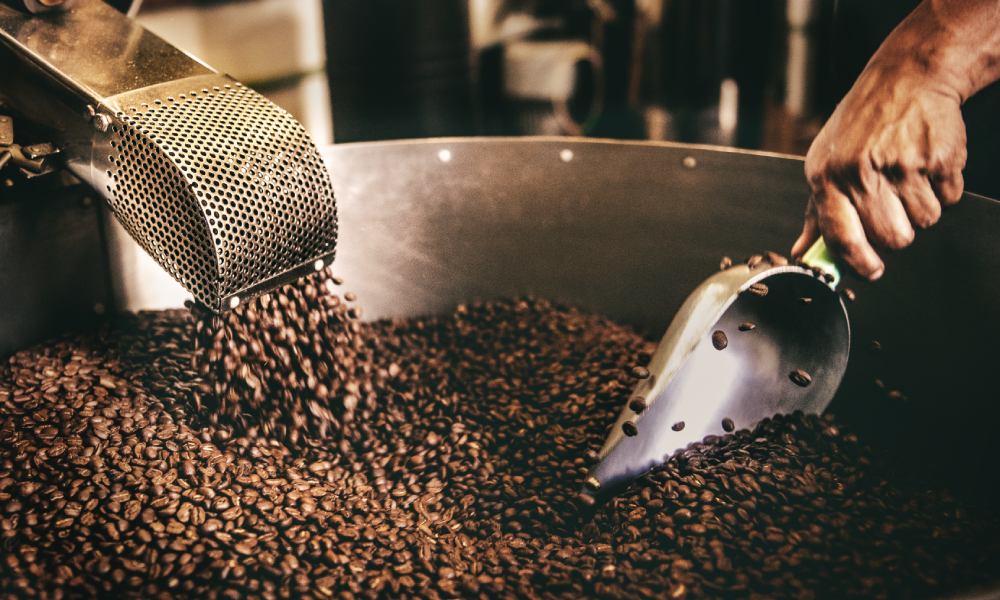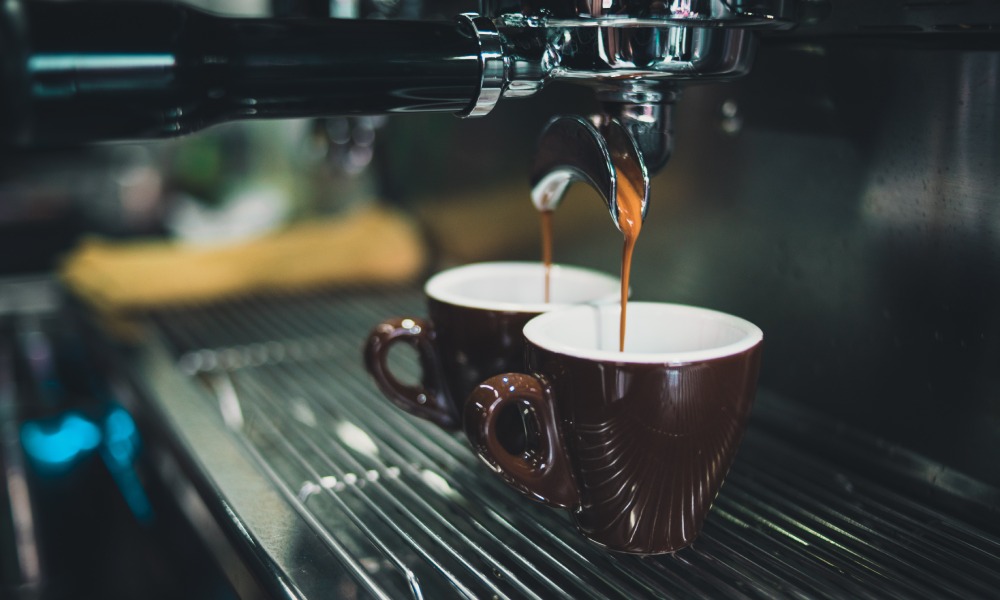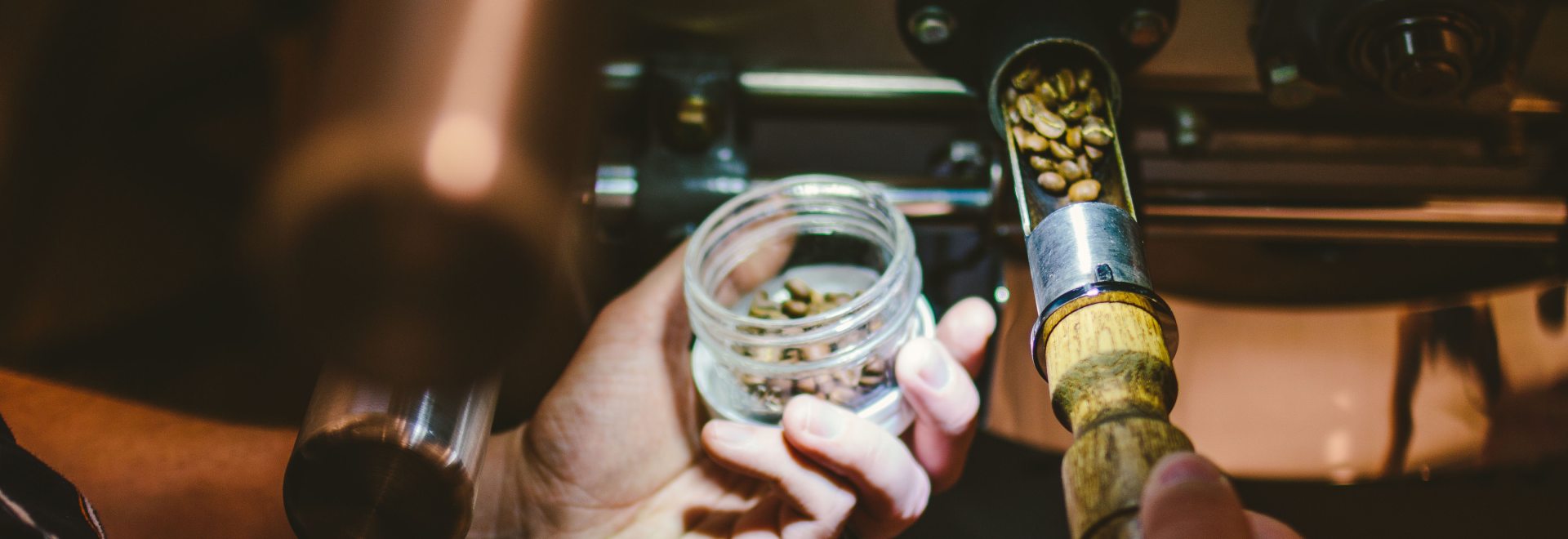How does a coffee’s roast profile affect extraction?
Understanding how roasting affects the chemical structure of coffee is essential for honing your extraction. Matt Haw speaks with Espen Stokkan Smith to explore the relationship between roast profile and brew recipes and extraction.
Brew recipes are created around one basic principle: hot water extracting soluble flavour and aroma compounds from coffee. As such, it’s essential that we first look at one of the greatest influences on solubility – how a coffee has been roasted.
Often, we use the term “roast profile” to describe this. A roast profile is a graphical depiction of the roast progression, displayed as temperature over time. Espen Stokkan Smith, part of the lab team at Nordic Approach, describes it as the logging of data.
“You’re capturing a series of data points,” he says. “Different temperature variables, power to the roaster, airflow inputs, or drum speed, and then logging all these data points to understand how they interact with each other.”
It’s essential to understand how the beans react when they are roasted, and how a coffee develops throughout roasting.
“Different coffees behave differently when they receive heat,” says Espen. “The classic example would be washed versus natural.” Washed coffees tend to be more dense than naturals, and therefore benefit from higher temperatures during roasting.
Espen explains that bean density is a crucial factor to consider when determining a roast profile. The denser the bean, the better it reacts to heat inside the roaster – “hard” beans perform well at higher charge temperatures, while “soft” beans risk scorching.
“Kenyan coffees are known for being very dense and reactive. You can roast them very quickly and still get pleasant flavour developments,” he says.
Brazilian coffees, on the other hand, are “known for being lower density and even if you give the same power input as with a Kenyan coffee, they take longer to reach first crack”.
Bean density, moisture content, batch weight, and screen size are all factors which determine how a coffee should be roasted. By accounting for these, roasters are able to target desirable characteristics such as flavour, aroma, and texture.

How do roast profiles affect extraction?
The roast profile has a significant impact on the solubility of coffee and is, therefore, crucial to understand when considering extraction. Different roast levels affect the physical properties of the beans in different ways.
While hard and fast rules in coffee are difficult to come by, a darker or more developed roast is generally more soluble than a lighter roast.
Darker roasts are more porous, which means that once ground, solubles can be extracted more easily. Espen explains that the end product is less dense because the roasting process has evaporated more of the moisture from the coffee. This is because it spends longer in the roaster to reach this point.
Solubility increases as the cell structure of the beans degrade and become increasingly carbonic. Because espresso is brewed over a shorter period of time, Espen adds: “You would traditionally develop an espresso roast more than a filter roast as it makes solubility and extraction higher.”
A more developed coffee also understandably tastes different to a lighter roast.
“A light roast will bring out more nuance or flavour clarity,” explains Espen. This shorter development time suits delicate or tea-like coffees whose aromas and flavour compounds might be lost in a longer roast. The further a roast is developed, the less the coffee will retain its origin characteristics, instead taking on more roasty flavours.
As you roast darker, acidity tends to diminish and sugars develop. “You will often find more bitterness with a longer roast, perhaps less clarity in flavour, but sweetness will also go up,” says Espen. “Sweeter flavours benefit from a little bit more development.”
In turn, this impacts a coffee’s mouthfeel.
“In terms of mouthfeel, a longer development time will also give a heavier, more impactful texture,” explains Espen. During a longer roasting process, more caramelisation occurs, which in turn gives the coffee a heavier body.
All of these factors are key to understanding how you should brew a specific coffee based on how it has been roasted.

How to adjust your coffee brewing recipe for different roast profiles
If a dark roast and light roast were brewed to the same recipe, you would find a higher extraction yield from the darker roasts.
This is a simple way to demonstrate the role roast level and solubility play in extraction. So how do you alter the recipe to accommodate for it?
“Grind size would be the easiest or quickest variable to change,” says Espen. A lighter roast requires a finer grind size to ensure that the brew water is able to make contact with more of the surface area of the coffee. Conversely, a coarser grind will make it harder for the water to extract too many bitter-tasting compounds from the coffee.
The water-to-coffee ratio should also be considered. Typically, less water is needed to brew darker roasts, while lighter roasts often require more water to extract the desirable flavour compounds from the coffee.
Espen also recommends considering temperature. “For lighter roasts, you can also use higher temperature water to extract more or make the extraction happen quicker,” he says. When working with more developed coffees, however, higher temperatures can lead to the extraction of bitter and ashy flavours.
Ultimately, a roast profile not only indicates the flavours that we can expect – but they also serve as a guide for extraction parameters. As new technology gives us more control over the brewing process, it is as important as ever to understand how roasting influences this, too.








